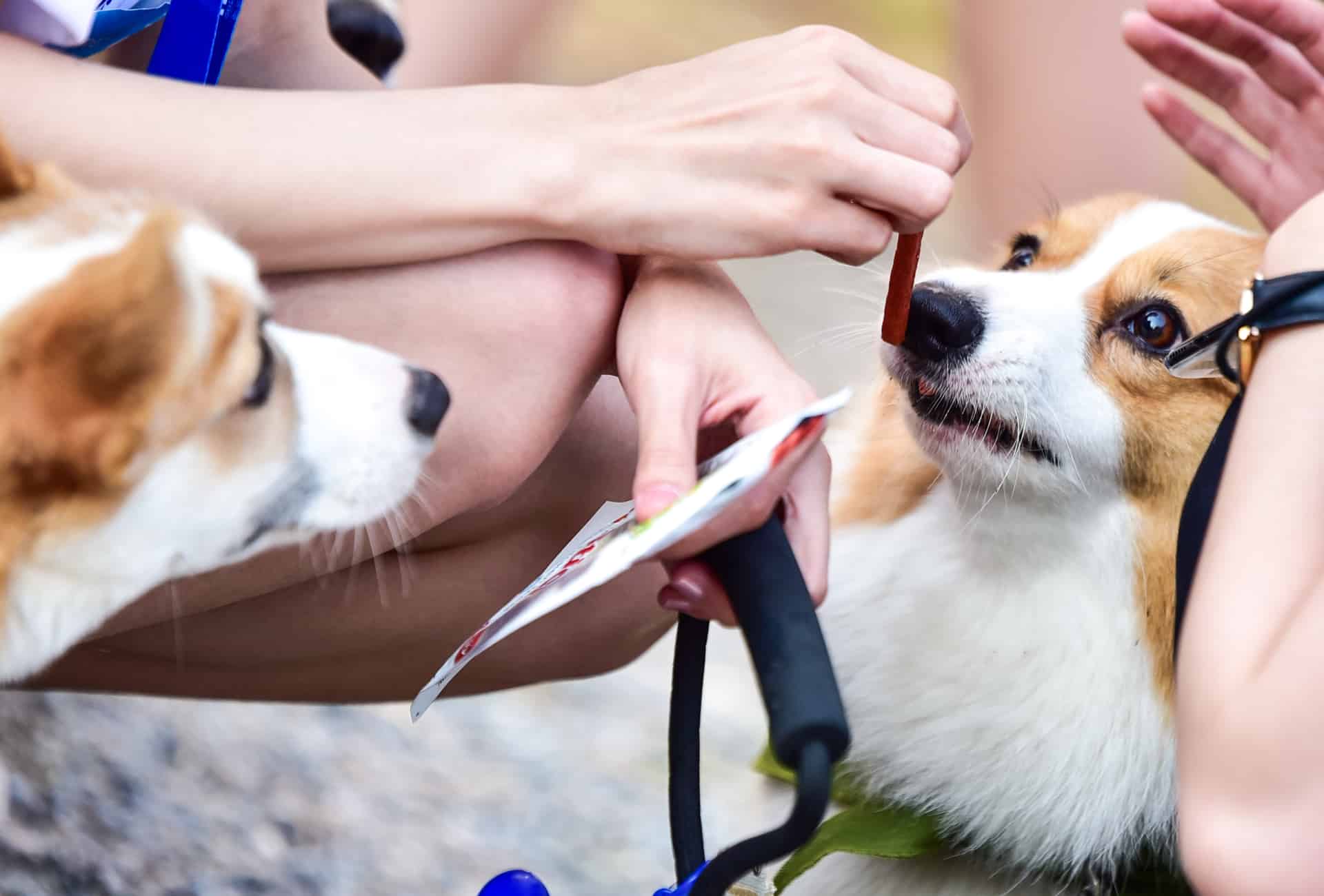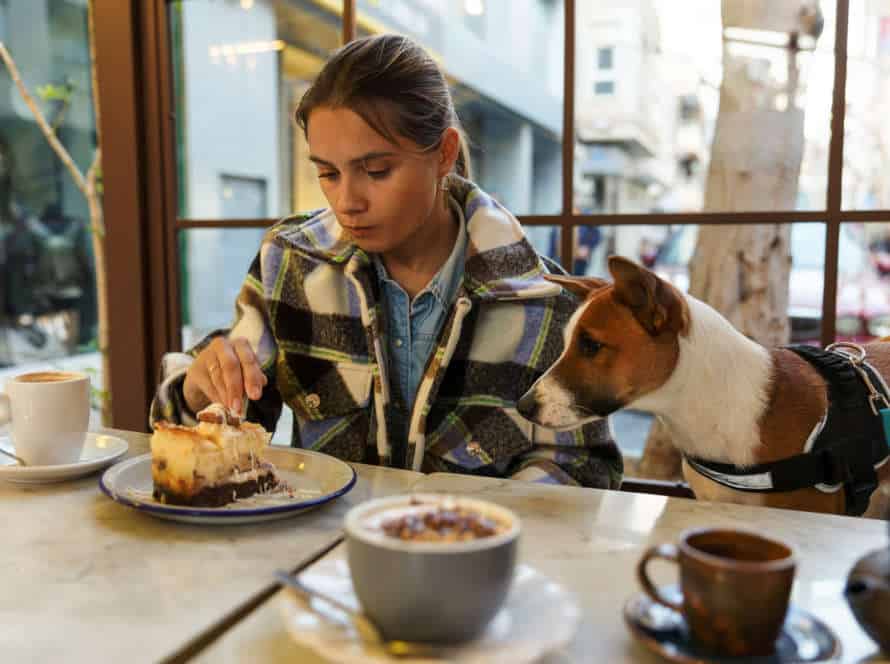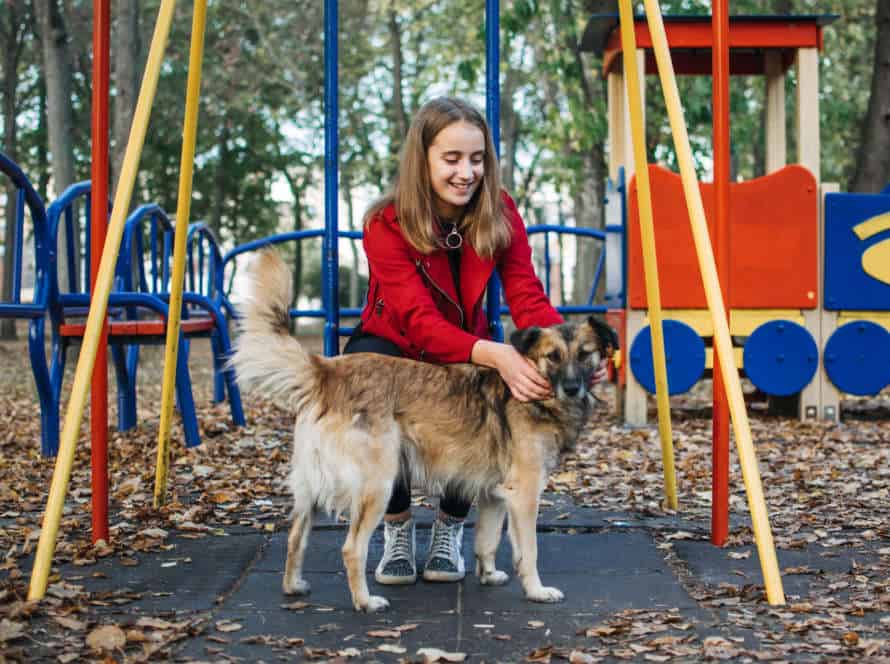Establishing Healthy Feeding Routines in a Multi-Dog Household
Having a healthy feeding regimen for multiple dogs is key to guarantee proper nourishment, avoid food aggression, and keep harmony during mealtime. Here are some tips to achieve this:
- Feed your dogs in separate areas. This stops food aggression and lets each pup eat at their own speed.
- Know each dog’s portion size depending on their age, weight, and activity.
- Keep a consistent mealtime. This regulates their digestive system and stops accidents at home.
- Give your dogs high-quality, nutritionally balanced food that meets their specific dietary needs.
- Observe your dogs while they eat. This stops them from stealing food and keeps aggression in check.
Pro Tip: Providing mental stimulation toys like treat puzzles can keep your pups busy and mentally engaged during mealtime, which reduces food aggression.
Understanding the Challenges of Feeding Multiple Dogs
Feeding several dogs can be tough. Planning a regular routine to feed them requires extra thought. Dogs’ dietary needs and tastes vary, so it’s vital to comprehend the issues and solutions for multi-dog mealtime. Let’s see how to feed multiple dogs in one house. Portion control is key. Also, decide the best times for meals and snacks.
Dealing with Food Aggression and Competitiveness Between Dogs
Food aggression and competitiveness between pooches during mealtime can be a tricky problem for owners with multiple doggos at home. Knowing the struggles of feeding multiple dogs and having balanced feed times is essential for dealing with this behavior.
Feeding routines: To avoid food aggression and unease between your furry friends, set fixed mealtimes and spots for them. This way, they’ll know what to expect and when to expect it.
Bowl positioning: Put bowls in strategic places around the food spot when giving meals to multiple dogs together.
Supervision: Keep an eye on your pups while they’re eating to reduce the risk of any problems or misbehaving.
Feeding separately: If you observe food aggression or competitive behavior, try feeding them apart so they can focus on their food without thinking of their housemates.
Pro tip: Train your dogs from the get-go to control food aggression and promote healthy eating habits. This way, you can prevent difficulties with feeding them in the future.
Taking into Account Individual Nutritional Needs of Different Dogs
Feeding multiple pups can be tricky! To make it easier, grasp the pup’s individual needs. A few guidelines to keep in mind:
- Figure out the pup’s breed, size, age and activity level.
- Find a top-notch grub that meets all their needs, including any dietary limits.
- Feed at the same time and with separate bowls.
- Keep track of their eating habits and adjust the food to keep a healthy weight.
- Pro tip: Ask your vet for assistance on meeting each pup’s specific needs in a multi-dog home.
Managing Feeding Time Schedules
Managing feeding schedules in a multi-dog household can be a challenge. But with some planning, you can create healthy routines. Here are tips to help:
- Set a schedule. Have definite meal times and stay consistent. Every dog should have their own bowl.
- Think about dietary needs. Each dog’s food must meet their nutritional needs. If one has a medical condition, feed them separately.
- Monitor intake. Keep an eye on what they eat and when. This helps ensure each dog gets the right amount.
- Pro tip: Train your dogs to wait for their turn. This avoids conflicts and makes feeding time simpler.
Tips for Establishing a Healthy Feeding Routine
Feeding multiple pups in a household can be tricky, but it’s doable with the right structure. Think about each dog’s needs. Give them enough food every day. Split up their meals too. And don’t forget water! Here’s a few tips on how to give your pooches a great mealtime routine:
- Consider each dog’s individual needs when it comes to food and feeding times.
- Make sure each dog is getting sufficient food to meet their daily nutritional needs.
- Split up their meals into several smaller ones throughout the day to avoid overeating and indigestion.
- Provide fresh and clean water for your dogs at all times.
Create a Designated Feeding Area for Each Dog
Designate a feeding area for each dog to avoid conflict and create a healthy routine in a multi-dog household. Here are some tips:
- Choose a quiet, comfortable spot for each dog’s feeding station.
- Have separate bowls for each dog to avoid territorial and food aggression.
- Put each bowl in its own spot and encourage each dog to eat there.
- Feed your dogs the same time every day for consistency.
- After 30 minutes, pick up uneaten food to prevent overeating and fights.
- Keep the stations clean and hygienic.
- Provide fresh water away from their food bowls.
Implement a Consistent Feeding Schedule
For a healthy feeding routine, especially in a multi-dog home, it is key to have a consistent feeding schedule. Here are some tips:
- Make a set schedule, deciding on the time and portion sizes for each pup. Everyone in the house should stick to it.
- Give each dog their own bowl. This helps avoid conflicts or rivalry.
- Watch them eat to make sure they finish their meal and aren’t stealing from others. Alter the routine if needed.
- Don’t free-feed. Keep to a strict schedule.
- Provide nutritious food. This keeps them happy and healthy.
Pro Tip: If different dogs have different dietary requirements, try feeding them separately so they get the right nutrition.
Use Feeding Methods that Cater to Individual Needs
When it comes to feeding dogs in a multi-dog household, methods should be tailored to each pup’s individual needs. Here are some tips:
- Feed dogs separately to avoid food aggression.
- Elevated bowls are better for larger dogs – less risk of choking plus improved digestion.
- Plenty of fresh, clean water – especially in the warmer weather.
- Measure out portions for each dog – depending on size and activity level.
- Puzzle feeders are great for slowing down fast eaters and providing mental stimulation.
- Vet advice is key – if there are food allergies or sensitivities.
By customizing each dog’s diet, you can create a healthy feeding routine that supports their health and wellbeing.
Pro tip: Establish a feeding schedule for each pup – helps to monitor habits and detect any changes.
Addressing Common Feeding Issues in a Multi-Dog Household
Multi-dog households need healthy feeding routines! But, some common problems can occur. These include fighting over food, one dog not eating, and begging for snacks. Here, we’ll look at ways to tackle these issues and establish happy, healthy meal times.
Preventing Dogs from Stealing Food from Each Other
Do you have lots of pooches at home? Keeping them from stealing each other’s grub during mealtimes can be a hassle. Here are some tricks for setting up healthy feeding habits and preventing food theft:
- Feed your doggies independently in different rooms or with barriers to restrict access to each other’s food. This limits the possibilities of food stealing.
- Set regular feeding times for all your dogs and try to stick to it.
- Keep an eye on your canines while they eat and immediately stop any food stealing attempts.
- Give them puzzle feeders or interactive toys to make mealtime fun and not just a speedy snack.
- Train your dogs not to pinch food from each other with positive reinforcement techniques. Reward them for behaving well and keep to consistent routines.
These tips will help establish healthy feeding habits, encourage good behaviour, and reduce the risk of food-related aggression in your multi-dog home.
Making Sure Each Dog is Eating the Appropriate Amount and Type of Food
Making sure each pup in a multi-dog home gets the right amount and kind of food is essential for their health. Here’s how to set up healthy feeding habits for your dogs:
- Feed each individually in a different room to stop competition and quarrels.
- Figure out the size of the meals based on their age, weight and activity level.
- Don’t leave food out all the time, instead follow a strict schedule.
- Observe their eating to make sure they’re having their share, and adjust when needed.
- If one needs special diets or has health concerns, make a separate meal plan or ask a vet for advice.
Bonus tip: Give each dog their own bowl to reduce stress during feeding.
Monitoring and Managing Changes in Appetite and Eating Habits
Monitoring and managing changes in appetite and eating habits is key when you have multiple doggos in the house. Common feeding issues can pop up when dogs have different routines and needs. To address this, it’s essential to create a healthy routine that suits each pup. Here are some tips:
- Set a specific time for all to eat.
- Make sure each pup has their own bowl to avoid competition.
- Feed dogs individually if one has different dietary requirements.
- Monitor each dog’s appetite and adjust their routine accordingly.
- Don’t forget to give them lots of water and watch their intake.
By following these tips, you can make sure each pup gets the proper nutrition they need to stay happy and healthy!
Managing Multi-Dog Feeding in Special Situations
Multi-dog households need special care. Feeding is one of the main things to think about. It can be tough, especially with dogs who have special needs or medical issues. Here’s some help for those tricky times. Challenges of feeding multiple dogs in unique situations? We’ll give tips to make it work.
Introducing a New Dog into the Household
Introducing a new pup to the family can be tricky for both old and new pets. Here are tips to make it easier, particularly with feeding:
- Separate the dogs when eating to stop one eating another’s grub.
- Use set feeding areas with space to eat without interruption.
- Feed at the same time each day to help create a routine.
- Use high-value treats and praise to build positive connections with mealtimes and minimise aggression.
- Introduce the new pup gradually to the routine and keep an eye on them while they eat.
By following these steps, you’ll help all the dogs in the house have good relationships with food, each other and their owners.
Dealing with Medical Conditions or Dietary Restrictions
Managing multi-dog feeding when there are medical conditions or dietary restrictions can be a challenge. Here’s how to make it work.
- Firstly, set up separate feeding stations for each dog. This stops them from eating each other’s food and helps them get the right nutrition.
- Speak to a vet to find out the exact food and feeding times for each pup.
- Create a schedule and follow it. Keep an eye on their progress and adjust the routine if necessary.
- Provide plenty of fresh, clean water throughout the day.
With a bit of effort, you can create a successful multi-dog feeding routine.
Pro tip: Consult a vet nutritionist for a tailored meal plan.
Handling an Aging Dog’s Nutritional Needs.
Managing nutrition for an aging pup can be tough, but important to give them nutrients for their golden years. Here are tips for their diet:
- Increase protein for muscle mass and prevent lessening with age.
- Decrease fat content to avoid obesity and other health issues.
- Add supplements like glucosamine and chondroitin for joint care and reduce swelling.
- Speak to your veterinarian for a personalized diet catered to pup’s specific needs.
Plus, having a normal feeding routine helps make mealtimes simpler for both of you.
Frequently Asked Questions
Q: How do I know how much to feed each dog in a multi-dog household?
A: It’s important to consider each dog’s individual needs, such as age, weight, and activity level, when determining portion sizes. Consult with your veterinarian or a canine nutritionist for specific recommendations.
Q: Should I feed my dogs together or separately?
A: It depends on the dynamics of your particular dogs. Some dogs may become aggressive or competitive during meal times, in which case feeding separately would be best. Other dogs may do well eating together. Observe your dogs’ behavior during meal times to determine what works best for your household.
Q: How often should I feed my dogs in a multi-dog household?
A: It is typically recommended to feed adult dogs twice a day, but consult with your veterinarian for specific recommendations. Puppies may need to be fed more frequently.
Q: How do I prevent one dog from stealing food from the others?
A: One option is to feed each dog in a separate area or room to prevent competition over food. Another option is to use feeding puzzles or slow feeder bowls to slow down eating and reduce the chance of food stealing.
Q: Can I feed my dogs different types of food?
A: It’s best to feed all dogs in a multi-dog household the same type of food to prevent stomach upset or digestive issues. If one dog has a specific dietary requirement, such as a food allergy, consult with your veterinarian to develop a feeding plan that works for all dogs.
Q: Can I give my dogs treats in a multi-dog household?
A: Yes, but it’s important to monitor the amount of treats each dog receives to prevent obesity or health issues. Consider using treats during training sessions, and only offer treats in a separate area or away from meal times to prevent competition over food.







